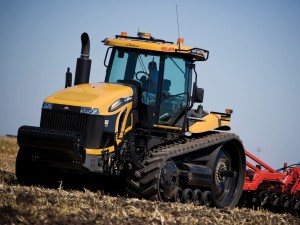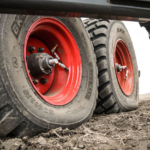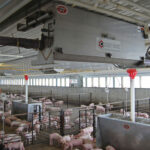History of Challenger Track Tractors
In 1890, Americans Benjamin Holt and Daniel Best started experimenting with various forms of steam tractors for use in farming. Working separately for their respective companies they were pioneers with track-type tractors and gasoline-powered tractor engines. In those early days,...
History of Challenger Track Tractors
In 1890, Americans Benjamin Holt and Daniel Best started experimenting with various forms of steam tractors for use in farming. Working separately for their respective companies they were pioneers with track-type tractors and gasoline-powered tractor engines. In those early days,...In 1890, Americans Benjamin Holt and Daniel Best started experimenting with various forms of steam tractors for use in farming. Working separately for their respective companies they were pioneers with track-type tractors and gasoline-powered tractor engines.
In those early days, steam traction engines were enormous and often got bogged down in soft soil. Freeing the machine could take days!
To increase the traction engine’s area of contact with the ground, Benjamin Holt hit upon the idea of replacing wheels with tracks. In 1904, the first Holt track-type tractor was tested. It soon went to work plowing soft ground near Holt’s factory in Stockton, California and was pronounced ‘a decided success.’
After more tests, the first crawler – with a new and improved set of tracks – was sent to the Holt family ranch for a winter of plowing.  Soon after, Holt coined the “Caterpillar” trademark.
Soon after, Holt coined the “Caterpillar” trademark.
Holt switched from steam power to gasoline and by 1909 his crawlers were being snapped up by customers.
Meanwhile Daniel Best’s son, C. L. Best formed his own company and in 1910 began building gasoline-powered, wheeled tractors. Almost immediately he set to work on an experimental track-type tractor. The ‘CLB’ 75 hp crawler appeared in early 1913 and was the first machine to bear Best’s ‘Tracklayer’ trademark.
The 75 Tracklayer incorporated a number of significant advances in design. Among them were improved oscillation of the tracks to reduce shock loads on the frame and the engine, plus improved metallurgy throughout the tractor.
In 1925, the Holt Manufacturing Company and the C L Best Tractor Company merged to form Caterpillar Tractor Company.
From 1925 to the present day has been a story of continuous product development. There were two major breakthroughs – the introduction of the diesel engine to the line in 1931 and the invention of the sealed and lubricated track.
The diesel engine gave the machines more horsepower than ever before and made them less expensive to own and operate. The sealed and lubricated track helped reduce costs of undercarriage maintenance. The track pin is permanently coated with a sealed-in lubricant, which minimizes metal-to-metal contact which slows pin and bushing wear.
The Challenger tractor, together with its patented Mobil-trac™ system, was introduced in 1987. Mobil-trac was a major leap forward providing greater traction and flotation, reduced soil compaction and more versatility for reduced costs and more productivity on the farm.
Improvements over the years have included a move from cable to hydraulics controls, computerized monitoring systems, torque dividers, planetary power shift transmissions, differential steering – the list goes on.
What jobs do you think Challenger track tractors work best for?



